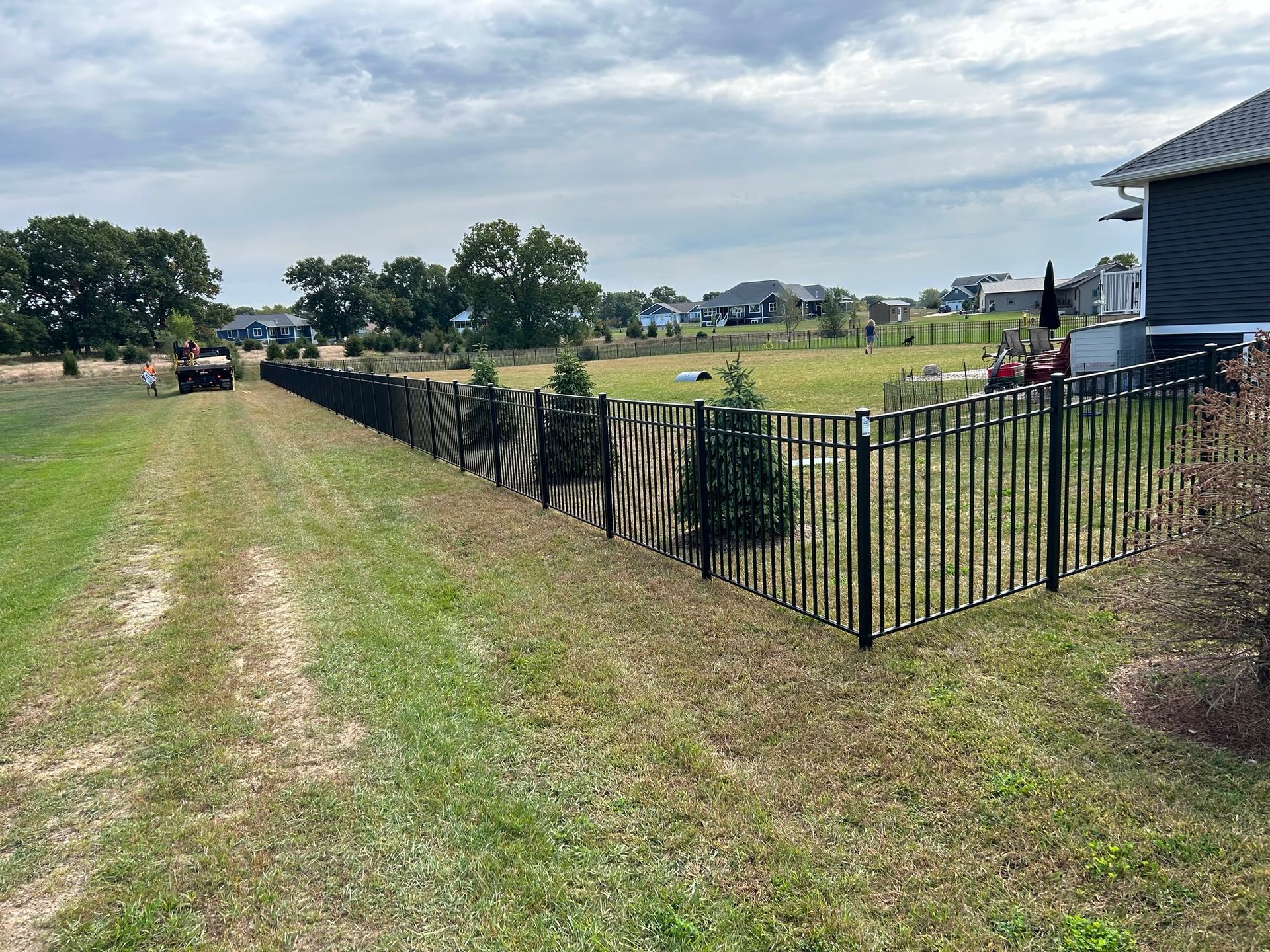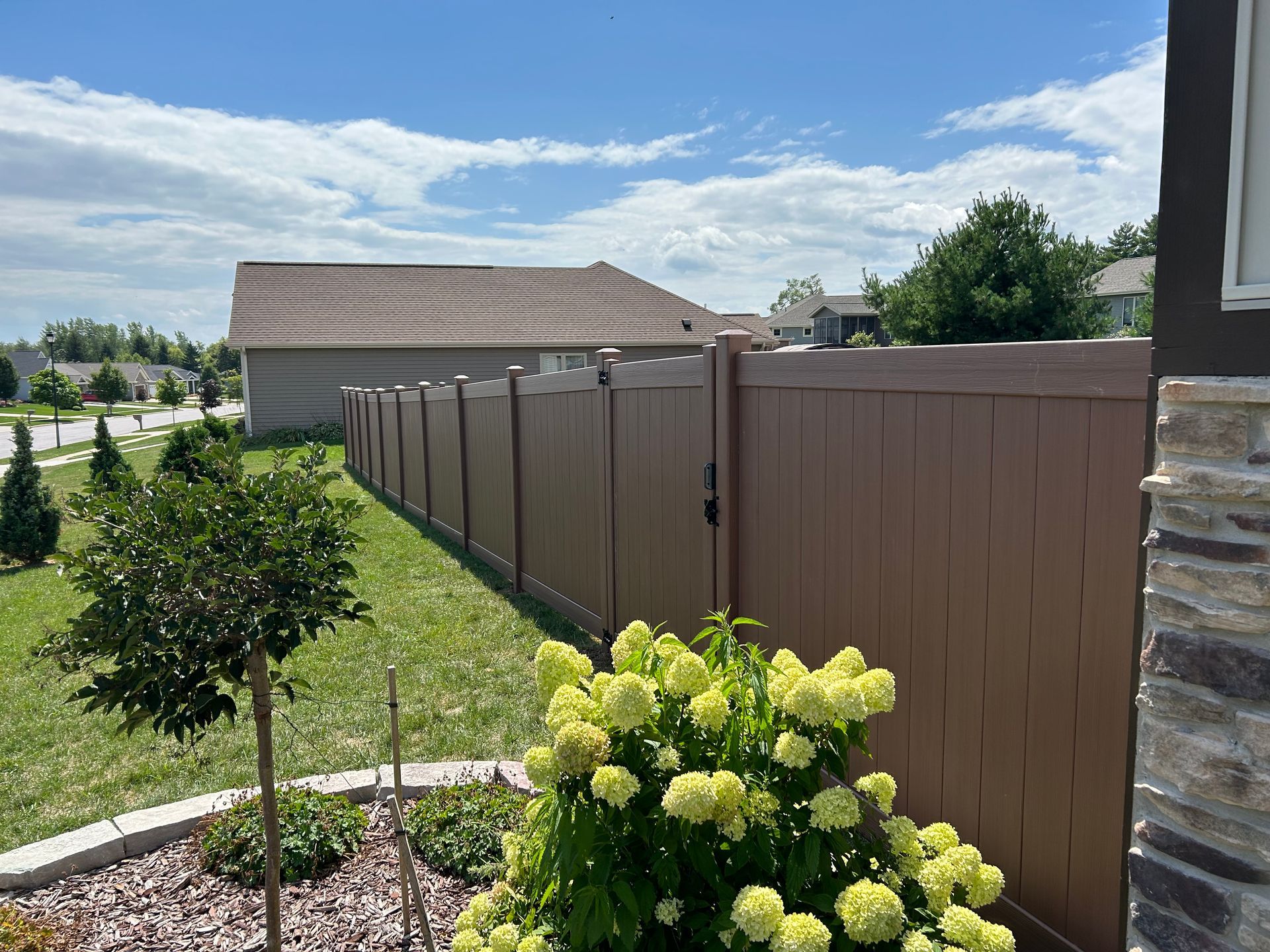How to Tell When It’s Time to Replace Your Fence
Samantha Bengtson • December 5, 2024
Learn How to Tell When It’s Time to Replace Your Fence

A fence is one of the most important features of your property, offering privacy, security, and curb appeal. However, like any other part of your home, fences don’t last forever. Over time, wear and tear from the elements, pests, and general use can take its toll, leaving you wondering when it’s time for a replacement.
At Fence World of East Troy, we understand the value a well-maintained fence provides. However, there comes a time when patching up problems no longer makes sense. This blog post will guide you through the key signs that it’s time to replace your fence—so you can stay ahead of costly repairs and maintain a safe, beautiful property.
1. Leaning or Tilting Posts
One of the most obvious signs that your fence needs to be replaced is leaning or tilting posts. Over time, the posts that anchor your fence can weaken due to weather, soil erosion, or poor installation. If your fence has started to lean, it could indicate that the posts are no longer stable, which compromises the overall structure.
Why it happens: Posts may loosen over time because of shifting soil, water damage, or rot at the base.
What to look for:
If several posts are leaning or if your fence no longer stands upright, it’s a clear sign the structure is no longer stable.
What to do:
A leaning fence could be temporarily fixed with repairs, but if the posts are severely damaged, it may be time to replace the entire fence to avoid further issues.
2. Rot and Decay (Especially with Wood Fences)
Wood fences are highly susceptible to rot and decay, especially when exposed to moisture or poor drainage. Over time, wood can absorb water, leading to mold, mildew, and eventual rot. If the fence is made from wood and you notice areas that feel soft or spongy to the touch, it’s a definite sign that rot has set in.
Why it happens: Moisture from rain, snow, or irrigation systems can lead to mold and rot in wooden fences.
What to look for:
Dark spots, a musty smell, soft or crumbling wood, and visible mold are clear signs of rot.
What to do:
If the rot is widespread or the damage affects key structural elements like posts and rails, it’s best to replace the fence entirely. Spot repairs may only delay the inevitable.
Customer Testimonial:
“We had a section of our wood fence that was completely rotted out after a few seasons of rain. It wasn’t until we noticed the softness of the boards that we realized the extent of the damage. Fence World of East Troy replaced our entire fence, and we haven’t had any issues since!” – Karen L., East Troy, WI.
3. Cracked, Broken, or Warped Boards
For wood fences, cracked, broken, or warped boards are common signs that it’s time to replace your fence. Over time, exposure to the elements can cause wood to crack or warp. These issues not only compromise the aesthetic appeal of your fence but also its functionality.
Why it happens: Wood naturally expands and contracts due to temperature fluctuations, which can lead to cracks, splits, or warping over time.
What to look for:
Visible cracks, missing or broken boards, and boards that no longer line up straight are all indicators of serious damage.
What to do:
If a few boards are damaged, they may be replaced individually. However, widespread cracking and warping may signal that the fence has reached the end of its life and needs to be replaced.
4. Rust or Corrosion (Especially with Metal Fences)
Metal fences, including chain link and wrought iron, are known for their durability. However, over time, exposure to moisture, rust, and other environmental factors can cause them to deteriorate. Rust or corrosion on your metal fence compromises its integrity and appearance.
Why it happens: Rust is a natural result of exposure to moisture and air, especially in areas with high humidity or near bodies of water.
What to look for:
If your metal fence is showing signs of rust, especially around the joints or bolts, it’s a sign that corrosion is spreading. Holes, peeling paint, or weakened sections are clear signs of damage.
What to do:
Rust can be treated with anti-rust solutions, but if large portions of the fence are corroded, replacing the fence may be necessary for both aesthetic and structural reasons.
5. Loose or Missing Hardware
Hardware such as nails, screws, and hinges are essential to holding your fence together. Over time, hardware can loosen, corrode, or break, causing sections of your fence to become unstable. If you find yourself constantly tightening bolts or replacing screws, it could be a sign that the fence is no longer in optimal condition.
Why it happens: Weather conditions, the natural expansion and contraction of materials, and general wear can cause hardware to loosen over time.
What to look for:
Loose or missing screws, bolts, and nails are signs that the fence is beginning to lose its stability.
What to do:
While replacing hardware can be a temporary fix, if the issue is recurring or the posts and panels are damaged, it’s best to replace the entire fence.
6. Unwanted Gaps or Spaces Between Panels
Over time, gaps between fence panels may appear, whether due to shifting posts, rotting wood, or natural wear. Gaps not only impact the appearance of your fence but can also reduce its effectiveness in providing privacy and security.
Why it happens:
Shifting posts, rotting wood, or general wear and tear can cause panels to move apart, creating gaps.
What to look for:
Noticeable spaces between boards or panels that were once tightly secured can indicate that your fence is losing its structural integrity.
What to do:
If the gaps are localized and the fence is still structurally sound, repairs may be possible. However, large or numerous gaps could signal that the fence needs replacing.
7. Your Fence is Simply Outdated or No Longer Matches Your Needs
Finally, a fence may need replacing not because of physical damage, but because it no longer suits your needs or preferences. If your fence no longer matches your home’s style, offers the level of privacy or security you require, or is simply outdated, it might be time to consider a replacement.
Why it happens: Over the years, your preferences may change, and what worked for you initially may no longer fit your lifestyle.
What to look for:
If your fence is outdated or no longer providing the privacy or security you need, it may be time for a new look.
What to do:
Consider replacing your old fence with something that meets your current needs, whether it’s a more modern design, increased height, or a more secure material.
Conclusion
Fences are essential for privacy, security, and curb appeal, but like all outdoor structures, they need maintenance and occasional replacement. If your fence is showing signs of leaning, rot, cracks, rust, or other damage, it may be time for an upgrade.
At Fence World of East Troy, we specialize in helping homeowners assess the condition of their fences and recommend the best replacement options. If you’ve noticed any of the signs mentioned above, contact us today for a consultation, and let us help you restore the beauty and functionality of your property with a new, durable fence.
Don’t wait for small issues to become costly problems—get your fence inspected today!
Learn More About
Fence World of East Troy
Serving southeast Wisconsin, Fence World of East Troy specializes in residential and commercial fence and gate installation services. 5-year workmanship warranty. Veteran discounts. Manufacturer warranties available. Call today.
serving Area
Southeast Wisconsin
and surrounding areas
Business Hours
- Mon - Fri
- -
- Sat - Sun
- Closed
Office Hours by Appointment Only
Hi. Do you need any help?
Privacy Policy
| Do Not Share My Information
| Conditions of Use
| Notice and Take Down Policy
| Website Accessibility Policy
© 2025
The content on this website is owned by us and our licensors. Do not copy any content (including images) without our consent.


Share On: